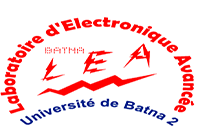The rapid progress of wide band gap SiC semiconductor material opens up new opportunities to develop efficient monolithically integrated ultraviolet (UV) photonic and power systems for a wide range of advanced applications. In this paper, low-noise solar-blind UV photodetector (PD) based on all-amorphous ZnO/SiC heterostructure was fabricated via RF magnetron sputtering technique. The device structural and optical properties were investigated before and after thermal treatment at different annealing temperature values varying from 300 °C to 600 °C. UV-Visible spectroscopy revealed that the annealing process has a beneficial effect in terms of high UV absorbance and solar-blindness properties. Photoelectrical characterization demonstrated the high UV photoresponse and low dark noise of the prepared UV PD based on all-amorphous ZnO/SiC structure. Improvement of the device performances were achieved by an appropriate annealing process. After post-annealing, the thermally treated ZnO/SiC UV PD at 500 °C exhibits a high detectivity of 2.4 × 1012 Jones, high signal to noise ratio of 2.64×105 and a giant UV–Vis rejection ratio of 5.9 × 103. Therefore, the present study may provide new perspectives for fabricating ultralow dark noise solar-blind UV PD based on all-amorphous ZnO/SiC heterostructure, which promotes the development of integrated UV photonic systems based on SiC platform.
Cost-effective multispectral photodetectors (PDs) exhibiting a high UV-Visible-NIR photoresponse offer an avenue for developing environmental monitoring devices, imaging sensors, object discrimination, and optical links. However, PDs based on a single semiconductor as light-sensitive layer are unable to provide broadband photodetection properties. In this work, a new PD device based on ZnO-ZnS Microstructured Composite (MC) which achieves a high UV-Visible-NIR photoresponse is demonstrated. The ZnO-ZnS MC is elaborated by combining vacuum thermal evaporation technique and a suitable annealing process. Scanning Electron Microscopy (SEM), energy-dispersive X-ray spectroscopy (EDS), X-ray diffraction (XRD), and UV-Vis-NIR spectroscopy were used to elucidate the morphological, structural and optical properties of the prepared sample. It was demonstrated that the ZnO-ZnS MC can be useful to enhance the visible absorbance efficiency by promoting efficient light-scattering effects. It is revealed that the prepared UV-Vis-NIR PD offers a low dark current of 5 nA, a high ION/IOFF ratio of 78 dB and an enhanced responsivity in UV, visible and NIR ranges. The proposed multispectral PD demonstrates a high ION/IOFF current ratio under self-powered working regime. Therefore, the proposed ZnO-ZnS MC is believed to provide new insights in developing efficient, self-powered and low-cost multispectral PDs for high-performance optoelectronic systems.
In this paper, ZnO-ZnS composite structure is proposed as a new efficient and earth-abundant absorber material for thin-film solar cells (TFSCs). Promising elaboration strategy based on combining vacuum thermal evaporation technique and oxidation process under an annealing temperature of 500 °C was used to prepare ZnO-ZnS composite with high sun-light absorption capabilities. The fabricated microstructure was then characterized by Scanning Electron Microscopy (SEM), energy-dispersive X-ray spectroscopy (EDS), X-ray diffraction (XRD), and UV–Visible absorption spectroscopy. The influence of the annealing time on the structural and optical performances of the prepared samples was investigated. Surface analysis demonstrated the ZnO decoration of ZnS thin-film, where SEM images showed dense and pinhole-free ZnO-ZnS composite with micrometer-sized grains and a few voids visible at thin-films surface. Optical characterization showed that the prepared thin-film absorber exhibits an optical band-gap of 2.65 eV with a high Total Absorption Efficiency (TAE) of 62% and an absorption coefficient exceeding 2 × 104 cm−1. In addition, I-V characteristics under dark and 1-sun illumination of the microstructured ZnO-ZnS composite were extracted. It was revealed that the proposed absorber showcases a high visible photoresponse. Therefore, promoting effective light-scattering effects, this innovative ZnO-ZnS composite offers a sound pathway to prepare alternative low-cost absorbers for the future development of TFSCs.
Laser communication between satellites in the constellation and from the satellites to ground stations offers a gigantic data rate for the users. This principal advantage drives telecom companies to develop this technology to use it like a carrier signal, the most disadvantage of this technology is the need to very complicated pointing systems between the transmitter and the receiver due to a very small beam divergence, continually moving of satellites in orbits and the distance between the satellites (tens of thousands of kilometers). The laser beam suffers continuously from several factors like atmospheric turbulences, internal and external vibrations. All these factors lead to an increase in the bit errors rate and cause degradation in the communication quality. This paper deals with a new method of modelisation of external effects in transmission of signal light from a ground station to the satellite through atmospheric disturbances. Indeed, an in-depth investigation, of the influences of satellite vibrationsinlaser signal transmission between satellites constellation, has been conducted by studying the effect of the intensity of vibrations on the optical signal amplitude. Some solutions are proposed to improve the efficiency of optical satellites communications.
